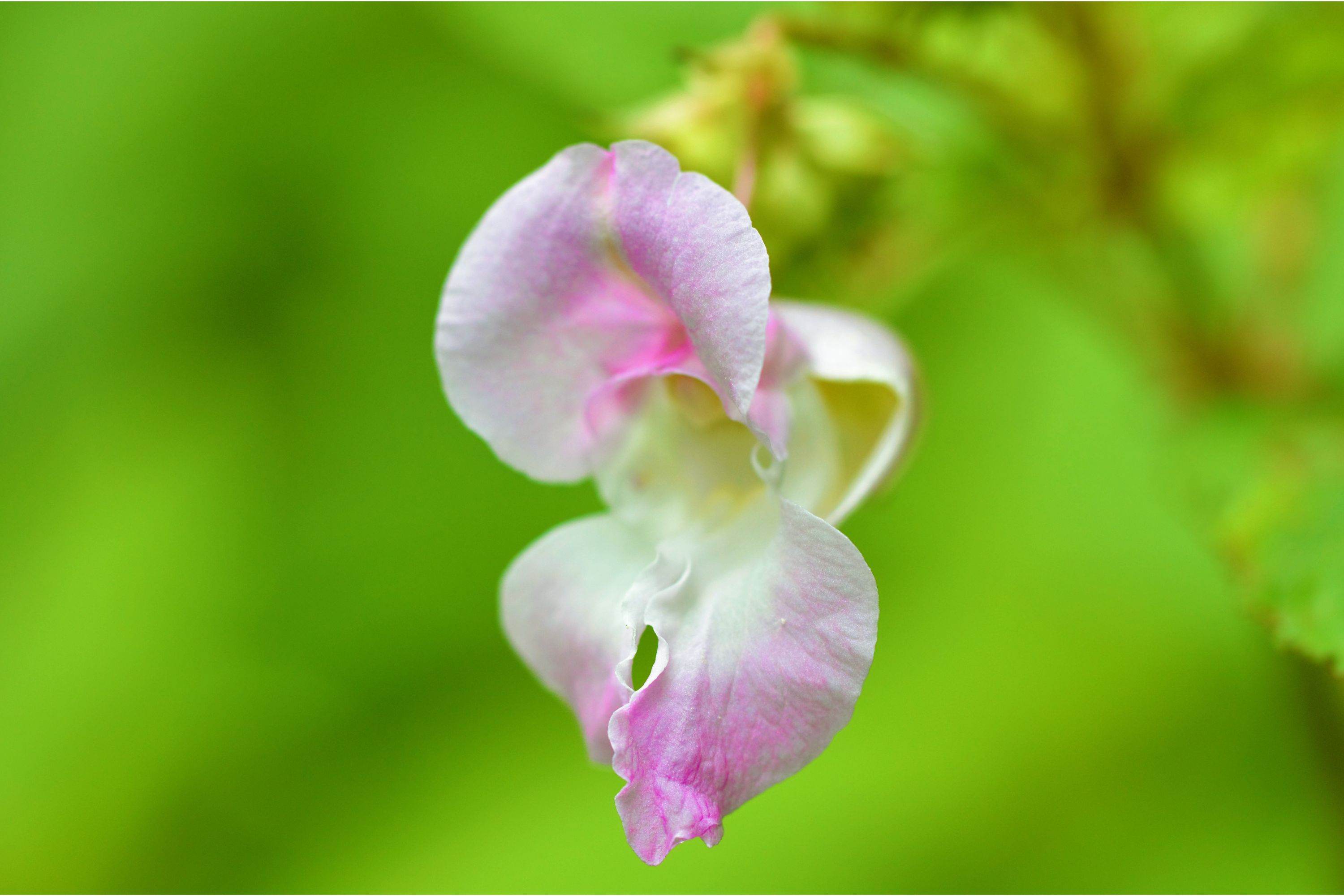Himalayan balsam
(Impatiens glandulifera)

Description
Impatiens glandulifera, commonly known as Himalayan balsam or Policeman's helmet, is a tall annual herbaceous plant native to the Himalayan region of India, Pakistan, and China. It has been widely introduced as an ornamental plant and has become naturalized in many parts of the world, including Europe, North America, and Australia. In this article, we will delve into the characteristics, distribution, habitat, and ecological impact of Impatiens glandulifera. Taxonomy and Nomenclature Impatiens glandulifera belongs to the family Balsaminaceae, which comprises about 1,000 species of herbs and shrubs distributed in temperate and tropical regions of the world. The genus Impatiens is the largest in the family, with over 800 species, and is characterized by its explosive fruits that burst open when touched, dispersing the seeds over a wide area. The species name "glandulifera" comes from the Latin word "glandula," meaning "gland," and "fera," meaning "bearing," referring to the glandular hairs on the stems and leaves of the plant. Physical Description Himalayan balsam is a tall annual plant that can grow up to 2-3 meters in height. It has a hollow, succulent stem that is green or purplish-red in color and can be up to 5 cm in diameter at the base. The leaves are alternate, simple, and broadly ovate, with serrated margins, and can be up to 15 cm long and 10 cm wide. The plant produces attractive pink, purple, or white flowers that are shaped like a helmet, hence the common name "Policeman's helmet." The flowers are about 3-4 cm long and have a spur at the back that is about as long as the flower itself. The fruit is a capsule that is about 2-3 cm long and explodes when touched, dispersing the seeds up to several meters away. Distribution and Habitat As mentioned earlier, Himalayan balsam is native to the Himalayan region of India, Pakistan, and China. It has been introduced to many parts of the world, including Europe, North America, and Australia, as an ornamental plant. It has also been intentionally introduced in some countries, such as the United Kingdom, as a medicinal plant, as the plant's sap has been traditionally used to treat skin conditions and as a laxative. Himalayan balsam is typically found in moist, disturbed habitats, such as riverbanks, ditches, and wetlands. It prefers soils that are rich in nitrogen and can tolerate partial shade. The plant is known to form dense stands that can exclude native vegetation and alter the hydrology of the surrounding area. Ecological Impact Himalayan balsam is considered an invasive species in many parts of the world due to its ability to rapidly colonize disturbed habitats and outcompete native vegetation. The plant is highly adaptable and can tolerate a wide range of environmental conditions, making it a formidable competitor for resources. It also has a high reproductive capacity, with each plant capable of producing up to 2,500 seeds per year, which can remain viable in the soil for several years. The dense stands of Himalayan balsam can shade out and displace native plant species, reducing biodiversity and altering ecosystem functions. The plant's shallow root system also makes it a poor stabilizer of riverbanks and can contribute to erosion and sedimentation. Control Measures Effective management of Himalayan balsam requires a combination of mechanical, chemical, and cultural control measures. Mechanical control involves physically removing the plant from the ground, either by hand or with machinery.
Taxonomic tree:







